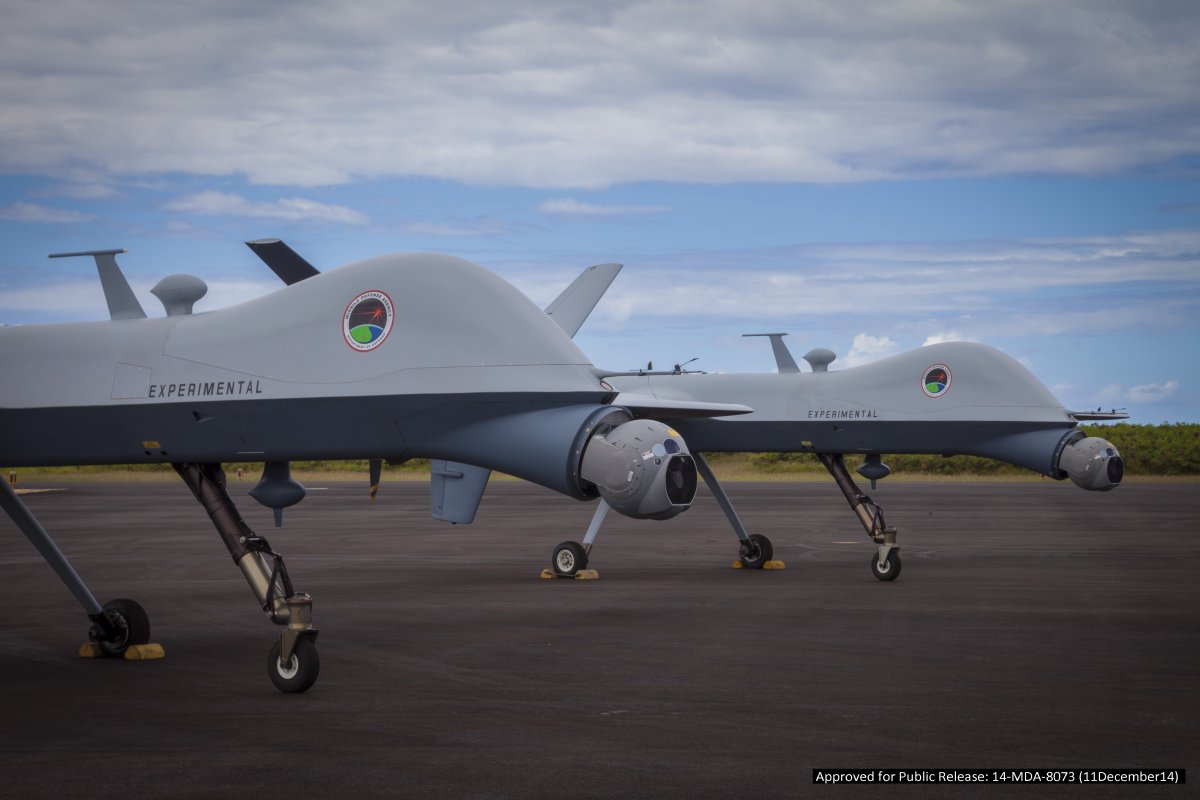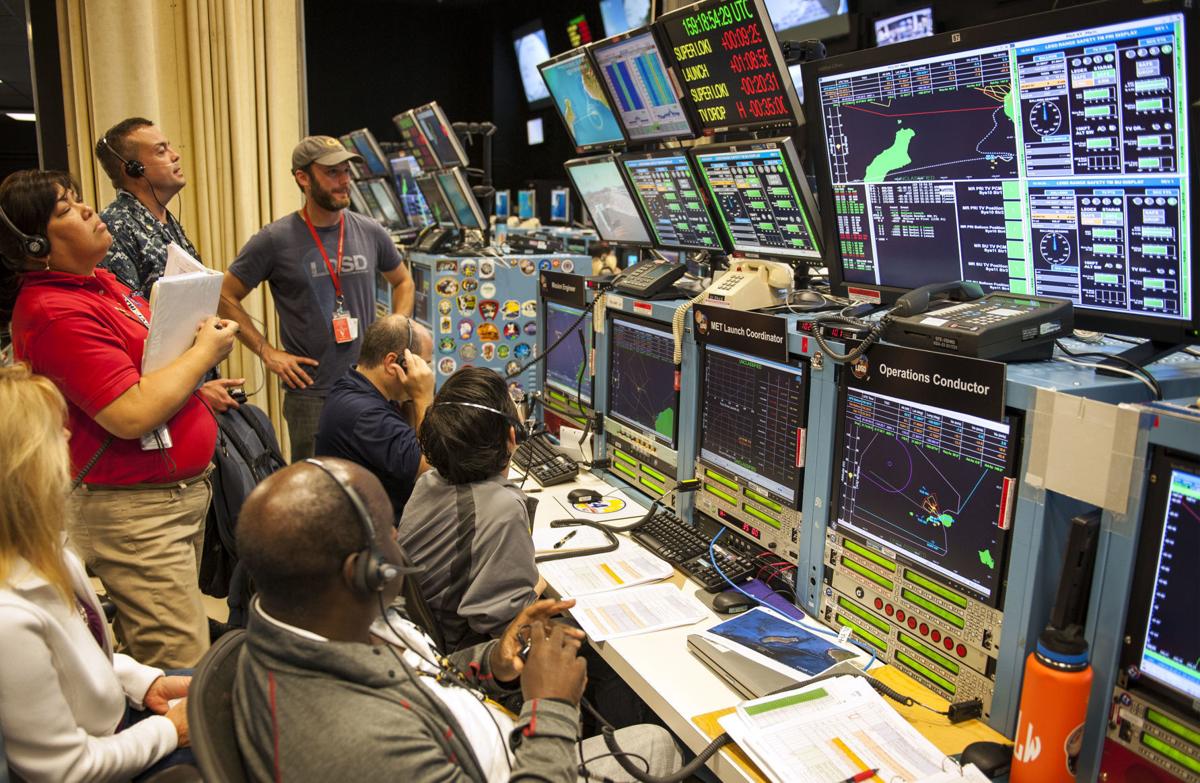 |
| Two Predator B RPA equipped with Raytheon Multi-spectral Targeting Systems (MTS-C) Electro-optical Infrared (EO/IR) turrets were used to detect and track a Ballistic Missile (BM) target |
 |
| Military, NASA and JPL team observes NASA Low-density supersonic decelerator (LDSD) test vehicle trajectory after its launch from US Navy's PMR facility in Kauai, Hawaii - MC2 Diana Quinlan |
Predator B Detects and Tracks Ballistic Missile in Pacific Dragon Exercise
SAN DIEGO – 15 August 2016 – General Atomics Aeronautical Systems, Inc. (GA ASI) today announced that through a contract with the Missile Defense Agency (MDA), it executed a missile tracking test as part of the Pacific Dragon (PD) exercise held June 26-28 off the coast of the Pacific Missile Range Facility (PMRF) in Kauai, Hawaii.
Pacific Dragon is a trilateral Ballistic Missile Defense (BMD) tracking event between the U.S. Navy, Japan Maritime Self Defense Force, and Republic of Korea Navy. The biennial exercise focuses on improving tactical and technical coordination among its participants, including the detection, tracking and reporting of ballistic targets.
A pair of Predator® B RPA equipped with Raytheon Multi-spectral Targeting Systems-C (MTS-C) Electro-optical Infrared (EO/IR) turrets were used to detect and track a Ballistic Missile (BM) target as part of an ongoing program with MDA. The Predator B aircraft also participated in exercises with U.S. Navy vessels.
USAF Reapers demonstrate missile tracking capability
General Atomics says the specific Reaper element of the testing was carried out under a contract awarded by the US Missile Defence Agency (MDA), and involved the UAVs using their Raytheon Multi-Spectral Targeting System-C electro-optical/infrared turret to detect and track ballistic missile targets.
Unlike the Reaper's earlier MTS-B payload, which has short- and mid-wave infrared (IR) sensors, the C version incorporates a long-wave IR sensor. This provides a "cold body" detection capability, which can be used to track ballistic missiles during their cruise phase.
MDA contributed to a larger Pentagon effort to develop the two-color MTS-C; this added a long-wave IR detection capability. While the short- and mid-wave bands are optimal during launch and rocket burn, a long-wave detector is better for tracking cold bodies, such as missiles after burnout, or plumes and exhaust.
Packaging short-, mid- and long-wave IR detectors on the same sensor ball, however, presented complex challenges, including design of proper cooling and meeting power requirements.
MDA planned to conduct a launch-on-remote exercise. “To demonstrate launch on remote, we will provide real-time tracking data to [ballistic missile defense (BMD) command-and-control] nodes,” Lehner says. “The BMD command-and-control nodes then send [the data] to Aegis in a simulated engagement.”
Carey notes that in trials thus far, ABIR has generated virtual targeting data that can be compared against data from other sensors used in the tests. But he says more command-and-control and system architecture work is needed to make the system operational.
“The test provided valuable data in our ongoing effort to develop an effective airborne missile defence capability,” Linden Blue, the UAV manufacturer's chief executive says.
The MDA is exploring the use of UAVs in missile defence as a more flexible and low-cost option for intercepting ballistic weapons.
“By leveraging unmanned aerial vehicles and space assets for pervasive over-the-horizon sensor netting, the engagement zone of current [Raytheon] Standard Missile-3 interceptors can be extended to the pre-apogee portion of a missile's trajectory,” the agency says.
Related/Background
- Raytheon to provide long-range multi-spectral sensors for Navy long-range reconnaissance aircraft
- MDA Eyes UAVs For Discrimination, Boost-Phase Kill | AWIN content from Aviation Week
- Sensors make-or-break ballistic missile defense - Military & Aerospace Electronics
- MDA - Potential New Technologies
- MDA Confident In UAS Missile-Tracking Potential | AWIN content from Aviation Week
- Trilateral ballistic missile defense exercise concludes off Hawaii | Naval Today
- Pacific Dragon Exercise Concludes
- US, S Korea, Japan Conclude Ballistic Missile Defense Drills in Pacific
- Predator B Detects and Tracks Ballistic Missile in Pacific Dragon Exercise - UAS VISION
- Pacific Dragon exercise concludes | Quarterdeck | militarynews.com
No comments:
Post a Comment